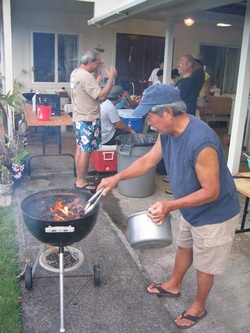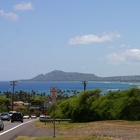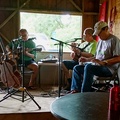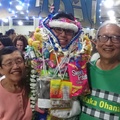"Japanese people in Hawaii are diverse. You can't generalize them all as 'Japanese people in Hawaii.'"
When I agreed to write this essay, Ms. M, a third-generation Japanese-American, gave me serious advice. She then spoke in her usual polite tone about diversity and diversification.
As the second generation of Japanese Americans grew older, the leading figures in Hawaii's Japanese community, such as Daniel Inouye and George Ariyoshi, retired from the forefront, and the central role was gradually handed over to the third generation. Many third generation Japanese Americans attended Japanese language schools, but due to the wartime internment and hostile policies against Japanese Americans, many families did not allow their children to learn Japanese as a sign of loyalty to America. Due to these and other reasons, the third generation and later Japanese Americans became more diverse.
Honolulu, of course, has a Chinatown, and the budding Korean town can be seen in the area up the mountain from Kapiolani Boulevard in Ala Moana. If you stroll around Chinatown, you'll hear high-pitched Chinese, and if you go to a Korean supermarket to buy fresh eggs and vegetables, you'll feel like you're being scolded by an older woman. Everyone lives their daily lives in Hawaii in the language of their own ethnic group.
However, I don't know if I'm looking for it properly, but there is no Japantown anywhere. Even in the mainland of the United States, there seem to be only a few left. Among Asian people in the United States, Japanese people have a particularly high rate of intermarriage with other races and ethnicities.
Therefore, cultural change is also progressing, and the story would normally go like this: lifestyles are becoming increasingly westernized as generations go down. However, things are not that simple. Having spent nearly 20 years with my Japanese friends as if they were my family and relatives, and having lived in Hawaii twice during that time, I have a feeling that it is not necessarily true that Japanese culture is fading or disappearing in Japanese society. I get a similar feeling not only when I spend time with third-generation Japanese like M and L, but also with fourth-generation elementary school teachers and their children that I am in regular contact with.
For example, it is well known that Japanese words appear here and there in the daily conversations of the Japanese community in Hawaii. Words like "bento," "okazu," and "musubi" are all too well-known. Many Japanese words that are no longer used much in Japan were carried over and passed down by Japanese immigrants, and are still in use in Hawaii today. We often come across words like "sibi," "saji," and "chokki" that remind us that we used to use them out loud.
There would be no problem if they were using them in the same way that we do. However, it seems that some words are used with different meanings and nuances. The Japanese word they use that surprised me was "Oshare."
Now that Hawaii has become my research field, I no longer feel like staying there purely for sightseeing or leisure. This is because I try to remember "everything that happens during my stay" and record as many important things as possible. However, in my free time, it is natural to interact with local friends and go shopping. I did a lot of shopping especially when the yen was strong. These things are still part of "everything that happens during my stay."
When the exchange rate was around 70 yen to the dollar, I bought a lot of Ralph Lauren clothes and TUMI suitcases at the Waikele outlet mall. I go to Hawaii three times a year, so M and L were half-amused to see me. But Ralph Lauren shirts go well with both work and casual outfits, and TUMI's large and small suitcases, carts, and bags are suitable for a variety of travel situations. Compared to the current exchange rate of about 110 yen to the dollar, it was a great bargain.
I bought a lot of shirts last time, but I'm buying more this time. I bought a suitcase, but I'm going to buy a shopping cart next time. Mr. L called me "fashionable neh." I was naively taking it literally, but it seems that the word "fashionable" used by Japanese people has almost no positive meaning. They mean "show off," which means "to show off, to show off."
Mr. M and Mr. L and I are like family, and I don't think they would ridicule me, but I sense some kind of moral lesson in the word "Oshare," and I want to take it seriously. Let's take another look at the circumstances that Japanese immigrants found themselves in. In what situations did they, many of whom were plantation workers, continue to use the word "Oshare?" What were the thoughts and feelings of the Japanese immigrants, who earned the lowest wages on plantations in a multi-ethnic society, as they continued to save money? When I think about these things, the word "Oshare" used by their descendants, the Japanese-Americans, seems to be entangled with complex history and experiences.
© 2014 Seiji Kawasaki








